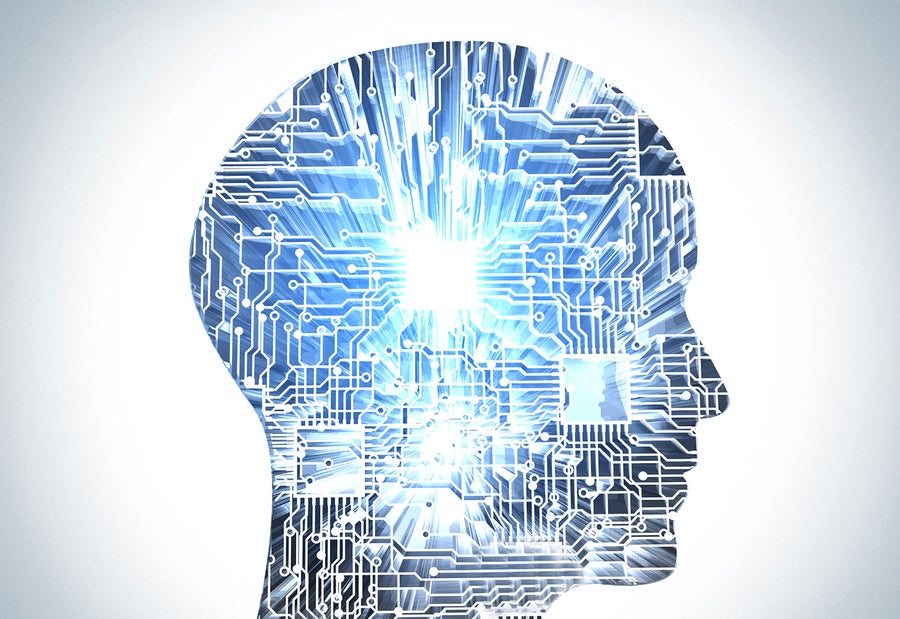MARCH 8, 2016
The U.S. Government Launches a $100-Million “Apollo Project of the Brain”
Intelligence project aims to reverse engineer the brain to find algorithms that allow computers to think more like humans
BY JORDANA CEPELEWICZ

©iStock
Neuroscience
Three decades ago, the U.S. government launched the Human Genome Project, a 13-year endeavor to sequence and map all the genes of the human species. Although initially met with skepticism and even opposition, the project has since transformed the field of genetics and is today considered one of the most successful scientific enterprises in history.
Now the Intelligence Advanced Research Projects Activity (IARPA), a research organization for the intelligence community modeled after the defense department’s famed DARPA, has dedicated $100 million to a similarly ambitious project. The Machine Intelligence from Cortical Networks program, or MICrONS, aims to reverse-engineer one cubic millimeter of the brain, study the way it makes computations, and use those findings to better inform algorithms in machine learning and artificial intelligence. IARPA has recruited three teams, led by David Cox, a biologist and computer scientist at Harvard University, Tai Sing Lee, a computer scientist at Carnegie Mellon University, and Andreas Tolias, a neuroscientist at the Baylor College of Medicine. Each team has proposed its own five-year approach to the problem.
“It’s a substantial investment because we think it’s a critical challenge, and [it’ll have a] transformative impact for the intelligence community as well as the world more broadly,” says Jacob Vogelstein at IARPA, who manages the MICrONS program.
MICrONS, as a part of President Obama’s BRAIN Initiative, is an attempt to push forward the status quo in brain-inspired computing. A great deal of technology today already relies on a class of algorithms called artificial neural networks, which, as their name would suggest, are inspired by the architecture (or at least what we know about the architecture) of the brain. Thanks to significant increases in computing power and the availability of vast amounts of data on the Internet, Facebook can identify faces, Siri can recognize voices, cars can self-navigate, and computers can beat humans at games like chess. These algorithms, however, are still primitive, relying on a highly simplified process of analyzing information for patterns. Based on models dating back to the 1980s, neural networks tend to perform poorly in cluttered environments, where the object the computer is trying to identify is hidden among a large number of objects, many of which are overlapping or ambiguous. These algorithms do not generalize well, either. Seeing one or two examples of a dog, for instance, does not teach the computer how to identify all dogs.
Humans, on the other hand, seem to overcome these challenges effortlessly. We can make out a friend in a crowd, focus on a familiar voice in a noisy setting, and deduce patterns in sounds or an image based on just one or a handful of examples. We are constantly learning to generalize without the need for any instructions. And so the MICrONS researchers have turned to the brain to find what these models are missing. “That’s the smoking gun,” Cox says.
While neural networks retain elements of the architecture found in the brain, the computations they use are not copied directly from any algorithms that neurons use to process information. In other words, the ways in which current algorithms represent, transform, and learn from data are engineering solutions, determined largely by trial and error. They work, but scientists do not really know why—certainly not well enough to define a way to design a neural network. Whether this neural processing is similar to or different from corresponding operations in the brain remains unknown. “So if we go one level deeper and take information from the brain at the computational level and not just the architectural level, we can enhance those algorithms and get them closer to brain-like performance,” Vogelstein says.


 Japanese
Japanese English
English French
French Hindi
Hindi Korean
Korean Arabic
Arabic Portuguese
Portuguese